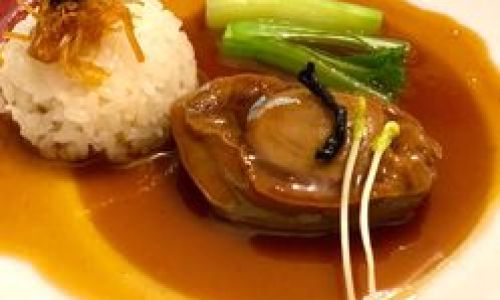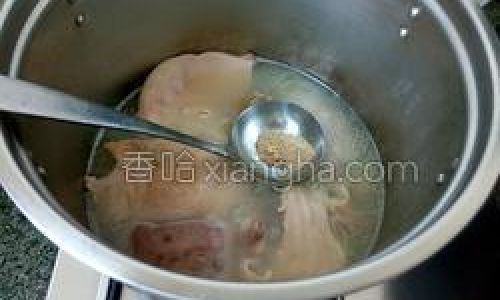Table of content
Abalone sauce, a luxurious and umami-rich condiment, has long been cherished in gourmet cuisine for its ability to elevate dishes with its briny sweetness and velvety texture. Whether drizzled over steamed vegetables, tossed with noodles, or used as a marinade for meats, a well-prepared abalone sauce can transform ordinary meals into extraordinary culinary experiences. Crafting this elixir at home may seem daunting, but with the right ingredients, techniques, and a dash of patience, anyone can master the art of creating a restaurant-quality abalone sauce. This guide will walk you through the process, from selecting the finest components to achieving the perfect balance of flavors.
Understanding the Essence of Abalone Sauce
Abalone sauce derives its complexity from the delicate interplay of ingredients that highlight the natural brininess of abalone while harmonizing with savory, sweet, and aromatic elements. Unlike store-bought versions, which may rely on artificial enhancers, homemade abalone sauce allows for full control over the intensity of flavors and the absence of preservatives. The key lies in simmering abalone with aromatics, broth, and seasonings until the liquid reduces to a glossy, concentrated syrup.
Key Ingredients for a Flavorful Abalone Sauce
To create a sauce that is both rich and nuanced, gather the following ingredients:
- Abalone: Fresh or dried abalone forms the heart of the sauce. Fresh abalone offers a tender texture and mild flavor, while dried abalone (rehydrated) contributes a deeper, more concentrated taste. If unavailable, high-quality canned abalone can serve as a substitute.
- Broth: Chicken or vegetable broth provides a savory base. For an even richer profile, use a combination of broth and dried scallop or shiitake mushroom soaking liquid.
- Aromatics: Garlic, ginger, and shallots add aromatic depth. Sautéing these until golden releases their fragrant oils, which infuse the sauce.
- Soy Sauce: A high-quality light soy sauce contributes saltiness and umami without overpowering the abalone’s delicate flavor.
- Oyster Sauce: This thick, sweet-savory sauce enhances the sauce’s body and complexity.
- Sugar: A touch of rock sugar or brown sugar balances the saltiness and brings out the abalone’s natural sweetness.
- Sake or Shaoxing Wine: A splash of alcohol adds a subtle acidity and helps tenderize the abalone.
- Sesame Oil: A few drops at the end impart a toasty, nutty finish.
- Cornstarch Slurry (Optional): For those who prefer a thicker consistency, a mixture of cornstarch and water can be added toward the end of cooking.
Step-by-Step Guide to Crafting Abalone Sauce
Preparing the Abalone
- Fresh Abalone: Clean the abalone by scrubbing its shell and removing the meat. Detach the foot (the muscular part) from the shell using a spoon. Trim any dark edges and slice the meat into thin strips or small cubes.
- Dried Abalone: Rehydrate dried abalone by simmering it in water for 4–6 hours until tender. Reserve the soaking liquid for the broth.
- Canned Abalone: Drain the liquid and slice the abalone into bite-sized pieces.
Sautéing the Aromatics
Heat a tablespoon of neutral oil (such as vegetable or peanut oil) in a heavy-bottomed pot over medium heat. Add minced garlic, ginger, and shallots. Sauté until fragrant and lightly golden, taking care not to burn them, as this would impart bitterness.

Building the Flavor Base
Add the abalone to the pot and stir-fry for 2–3 minutes to seal in its juices. Deglaze the pot with sake or Shaoxing wine, scraping up any browned bits from the bottom. This step adds a layer of complexity to the sauce.
Simmering the Broth
Pour in the broth (and reserved abalone soaking liquid, if using). Bring the mixture to a gentle simmer. Add soy sauce, oyster sauce, and sugar. Adjust the heat to low, cover the pot, and let the sauce simmer for 45–60 minutes. This slow cooking process allows the abalone to release its collagen, thickening the sauce naturally and infusing it with its essence.

Reducing and Seasoning
After simmering, remove the lid and increase the heat slightly. Let the sauce reduce by about a third, stirring occasionally to prevent sticking. Taste and adjust the seasoning—add a pinch of white pepper for warmth, a splash of soy sauce for saltiness, or a drizzle of honey for sweetness.
Finishing Touches
For a glossy finish, stir in a teaspoon of sesame oil. If a thicker consistency is desired, slowly whisk in a cornstarch slurry while the sauce simmers. Remove from heat and let the sauce cool slightly before transferring it to a sterilized jar.

Tips for Achieving Restaurant-Quality Flavor
- Quality Over Quantity: Invest in premium abalone and broth. The better the ingredients, the more nuanced the sauce.
- Patience Is Key: Avoid rushing the simmering process. Slow reduction concentrates flavors without causing bitterness.
- Balance Is Everything: Taste frequently and adjust seasonings incrementally. The goal is a harmonious blend of salty, sweet, and umami.
- Storage: Homemade abalone sauce can be refrigerated for up to two weeks or frozen for three months. Always use a clean spoon to prevent contamination.
Creative Variations and Pairings
- Vegetarian Twist: Replace abalone with king oyster mushrooms or dried shiitake mushrooms for a plant-based alternative.
- Spicy Kick: Add a sliced chili pepper or a dash of chili oil during simmering.
- Herb-Infused: Toss in fresh cilantro, basil, or Thai basil leaves just before finishing for a fragrant twist.
Pair the sauce with steamed rice, udon noodles, or blanched bok choy. It also shines as a glaze for grilled chicken or seared scallops.
Common Mistakes to Avoid
- Overcooking the Abalone: Simmering for too long can render the abalone rubbery. Monitor the texture and remove it once tender.
- Using Too Much Soy Sauce: Excessive soy sauce can overshadow the abalone’s delicate flavor. Start with a modest amount and adjust gradually.
- Skipping the Deglazing Step: Deglazing with alcohol elevates the sauce’s complexity by melding the caramelized aromatics with the broth.
The Cultural Significance of Abalone Sauce
In many Asian cuisines, abalone symbolizes prosperity and is reserved for special occasions. Its sauce, once a luxury reserved for emperors, is now a beloved staple in home kitchens. By crafting it yourself, you honor this tradition while adapting it to modern tastes.

Conclusion
Crafting abalone sauce is an alchemical process that transforms simple ingredients into a culinary masterpiece. With attention to detail and a willingness to experiment, you can create a sauce that rivals those found in Michelin-starred restaurants. Whether drizzled over a humble bowl of rice or used to elevate a festive feast, your homemade abalone sauce will become a cherished addition to your repertoire. So, embrace the journey, savor the process, and let the symphony of flavors delight your palate.





0 comments